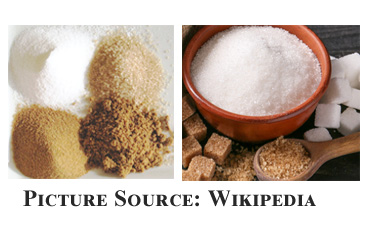Written By: Haneea Ahmad, Institute of Food and Nutritional Sciences, PMAS Arid Agriculture University, Rawalpindi
Sugars, known for their ability to sweeten foods and beverages, are significantly more than just sweeteners. The multiple functions of sugars includes; sweetness, taste and aroma, volume, texture, reduction in the freezing point, shelf life improvement, colour to foods, and enhanced fermentation. In food production and culinary, sugars act as flavor enhancers and maskers. Sugars amplify the inherent flavors of food by interacting with ingredients and increase the sensory appeal of the foods by neutralizing undesirable flavors, such as bitterness and acidity, that may develop from other ingredients. This dual functionality highlights the importance of sugars in food formulation, where achieving a balanced flavor profile is essential for consumer satisfaction.
Sugar’s as Flavor Enhancement
Sugar when consumed dissolves in the saliva and activates the taste cells on the tongue. This activation results from the occupation of the receptor sites on the sweet taste receptors by sugar. The activated receptors release neurotransmitters onto afferent cranial nerve fibers which then transmit the signals to the brain, particularly to the gustatory cortex in the parietal lobe. Within the brain, these signals are interpreted as the perception of sweetness. Besides taste receptors, humans perceive sweetness through various sensory cues. Sensory inputs such as temperature, texture, and aroma play an important role in the perception of sweetness.

Sugar play its role in flavor amplification. Sugar can affect taste by modulating and amplifying certain flavor compounds in foods. This is done either by complementing the flavor compounds or by fueling reactions. This also includes the functional properties of sugar that improve and impart flavor. One such example is the “Maillard reaction”. It is a non-enzymatic browning reaction characterized by the interaction between amino acids and reducing sugars. This interaction yields compounds called melanoidins which impart a brown color and enhance the flavors and aromas of food products. This reaction is particularly important in the baking industry for its role in the desirable browning and flavor development of baked goods.
Caramelization is another example. It is the oxidation of sugar that occurs when sugar is exposed to heat, leading to the evaporation of water from the sugar crystals. Leaving behind just sugar which reacts with each other and turns brown. The extent to which sugar turns brown depends upon the rate and intensity of heating. The caramelization occurs in foods that are rich in sugar. Onions have a high content of naturally occurring sugars, which when exposed to heat turn the onions brown. Onions also have a small quantity of proteins that fuel the Maillard reaction. Sugars caramelize at different temperatures as evident from table 1. Like the Maillard reaction, caramelization also produces compounds that impart flavors exclusive to each food product. Some of the compounds produced are given in Table 2.
Table 1. Caramelization temperatures for some sugars are:
Sugar | Temperature |
Fructose | 110◦C (230◦F) |
Galactose | 160◦C (320◦F) |
Glucose | 160◦C (320◦F) |
Sucrose | 160◦C (320◦F) |
Maltose | 180◦C (360◦F) |
Table 2. Compound produced and flavor production due to caramelization.
Compounds | Flavors |
Diacetyl | Buttery |
Ethyl Acetate | Fruity |
Furans | Nutty |
Maltol | Toasty |
Lactones | Rum like flavor |
Sugar role as Masking Undesirable Flavors
Bitter Flavor: Sugar can mask bitterness by binding to taste receptors specific to detecting bitterness. It has been theorized that a close relationship exists between sweet and bitter taste receptors. Research has shown that carbohydrates possess both sweet and bitter molecular regions which could span the receptors for both the sweet and bitter flavors. This is theorized to be a possible reason behind sugar’s ability to mask bitter taste.
Acidic-Sour Tastes: Unlike bitterness, sugars do not mask acidic-sour flavors. Sugar provides a contrasting flavor that tones down the sour-acidic flavor. This can be seen when 8% sugar is added to an 11.1% lemon solution decreasing the acidic-sour taste of the solution.
Saltiness of salts: Salt and sugar complement each other. The SGLT1 taste receptor on the tongue detects sugar, however, it can only be activated in the presence of salt, invoking a sensation that would not be possible if one of the two components is absent. Adding sugar solution to the salt solution reduces the saltiness of the solution. However, this is not because of sugar’s masking ability. Sugar cannot mask saltiness but provides a contrasting flavor that balances the saltiness.
In conclusion, the dual role of sugar as a flavor enhancer and masker demonstrates its importance in the food science and culinary world. By amplifying and concealing flavors, sugar creates an appealing flavor profile for food products. As rapid progress occurs in sensory science, a deeper understanding of sugar’s mechanism and interaction with various ingredients will empower food scientists and chefs to develop products that not only satisfy the palate but also enhance the sensory appeal of the foods. The writer is a Student of Food Science and Technology and can eb reached at haneea.ahmad@gmail.com
References are available on request